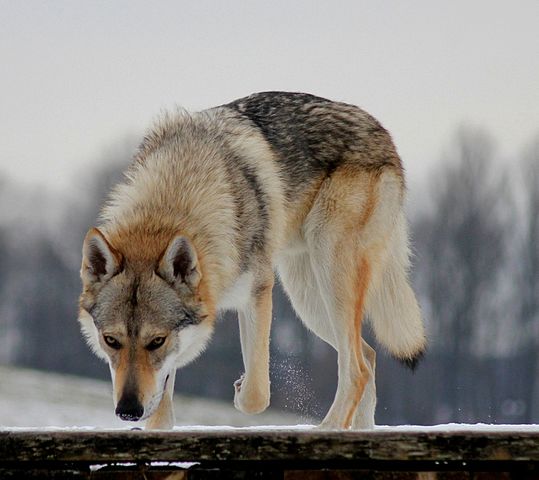
Nestled in the Blue Ridge Mountains of Virginia is the town of Wintergreen, and other than having Virginia’s biggest snow-tubing area, Wintergreen is best known for its four season mountain retreat, Wintergreen Resort. The amenities of the town may be one more reason that another noteworthy event (to dog people) occurred there, and that was the very first unofficial gathering of Czechoslovakian Vlcaks and their people.
Though the Czechoslovakian Vlcak had been officially recognized by the FCI in 1999, it wasn’t until 2001 that the AKC accepted it into its Foundation Stock Service, and not until 2006 that the United Kennel Club officially recognized it. In 2008, seven American owners and six Vlcaks gathered together in Wintergreen to do what dog people do: Meet other breed owners to talk about, and admire, their dogs. A year after that meeting, the first UKC Championship Title would be awarded to a Vlcak in 2009, the same year that the first litter was bred in the United States.
For those just tuning in (figuratively speaking), the Czechoslovakian Vlcak is not a new breed. In 1955, an experiment in the Czechoslovak Socialist Republic (CSSR) bred a German Shepherd Dog with a Carpathian wolf, and the study determined that offspring of the two species could be reared, whether it was a male dog to a female wolf, or a male wolf to a female dog. Ten years later, the experiment ended, but a breeding program was worked out that would combine qualities of the wolf with the favorable qualities of the dog. In 1982, the Czechoslovakian Wolfdog was recognized as a national breed by the general committee of the breeders’ associations of the CSSR.
It’s important to note that there has been no new wolf blood since the 1980’s, and this is important because it means the breed is no longer considered a wolf hybrid, but a purebred dog with wolf ancestry. Like many breeds, it isn’t for everyone, and certainly not first time dog owners. The Vlcak was originally bred for working border patrol in Czechoslovakia. It is more independent in nature than many other working breeds, and definitely needs an active owner who is “all in” with exercise. Put another way, throwing a ball isn’t going to “cut it.” Neither will a dull life. We’ve read that Czechoslovakian Vlcaks are “Einsteins” when it comes to manipulating their environments, and if there isn’t enough to stimulate their minds, they will invent something. This rarely ends well for a couch or rug.
As of 2018, around 200 pedigreed Czechoslovakian Vlcaks existed in the United States.
Image: By Tesori di Carli CC – 4.0, https://commons.wikimedia.org/w/index.php?curid=42936993
